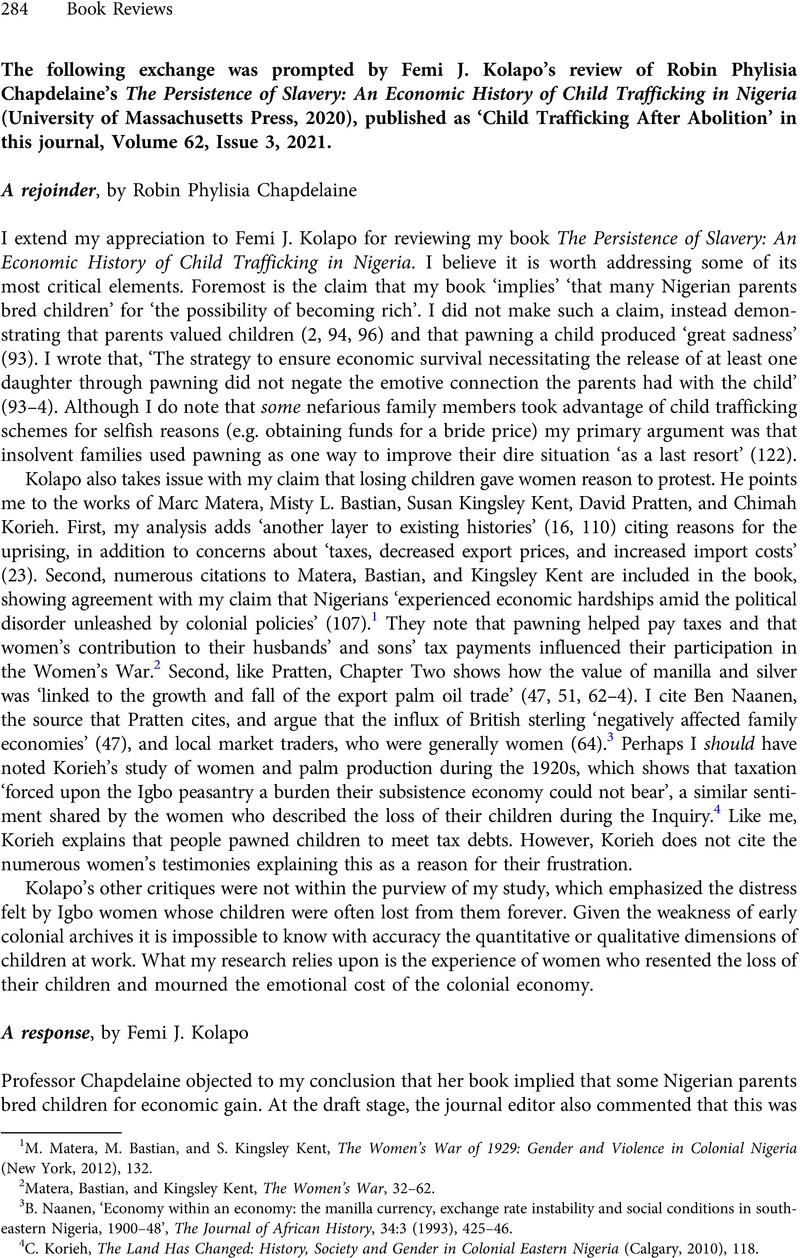No CrossRef data available.
Article contents
The following exchange was prompted by Femi J. Kolapo's review of Robin Phylisia Chapdelaine's The Persistence of Slavery: An Economic History of Child Trafficking in Nigeria (University of Massachusetts Press, 2020), published as ‘Child Trafficking After Abolition’ in this journal, Volume 62, Issue 3, 2021.
Review products
Published online by Cambridge University Press: 23 September 2022
Abstract

- Type
- Book Review
- Information
- Copyright
- Copyright © The Author(s), 2022. Published by Cambridge University Press
References
1 Matera, M., Bastian, M., and Kent, S. Kingsley, The Women's War of 1929: Gender and Violence in Colonial Nigeria (New York, 2012), 132CrossRefGoogle Scholar.
2 Matera, Bastian, and Kingsley Kent, The Women's War, 32–62.
3 Naanen, B., ‘Economy within an economy: the manilla currency, exchange rate instability and social conditions in south-eastern Nigeria, 1900–48’, The Journal of African History, 34:3 (1993), 425–46Google Scholar.
4 Korieh, C., The Land Has Changed: History, Society and Gender in Colonial Eastern Nigeria (Calgary, 2010), 118Google Scholar.
5 Pratten, D., The Man-Leopard Murders: History and Society in Colonial Nigeria (Bloomington, IN, 2007), 124–9Google Scholar.





